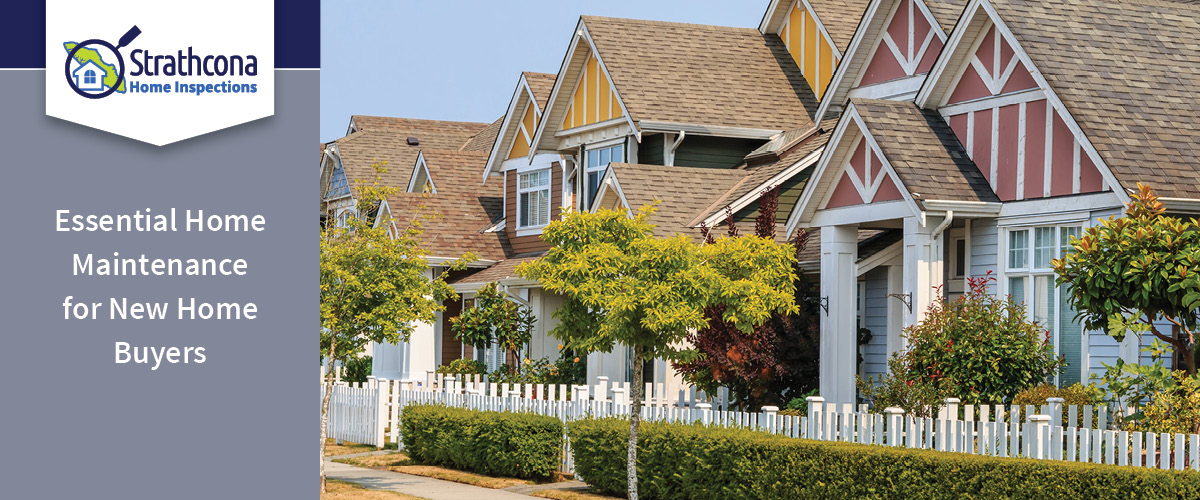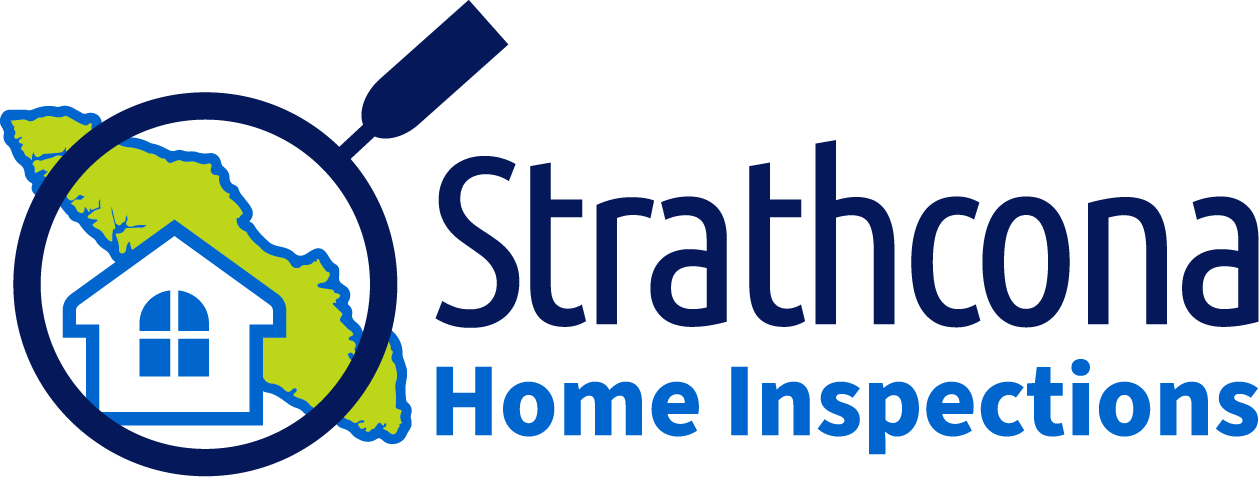-
Essential Home Maintenance for New Home Buyers

Regular maintenance is a critical part of home ownership! For most new buyers, their home is easily their most substantial asset. Ensuring home maintenance is a routine part of their ownership experience pays off. Diligent new buyers will almost certainly see an improved return on this significant investment.
Recently purchased a new home and wondering where to begin? Tap into the contacts you made while house hunting. Many home inspectors will continue to serve as a resource regarding a home’s condition even after their buyers take possession. Tapping into their network can save the home buyer time and frustration.
There are a lot of areas that require regular inspection and possibly even repairs in a home. Overwhelmed new buyers may be tempted to procrastinate. But it can’t be stressed enough…ongoing upkeep is the best way to prevent major issues. It’s also a great tactic to avoid any unbudgeted financial expenditure associated with potential problems. Need more motivation to tackle these chores…. your new home will function more efficiently, be more comfortable and, a major benefit, be safer for its occupants.
Easier by The Dozen! Twelve Home Maintenance Tips for A New Home
1. Check the Doors:
Keeping a home secure starts at the entrance.
Replace or, at minimum, rekey the old locks on all exterior doors.
- Add, or replace weather-stripping on all doors to eliminate drafts.
- For significant energy savings, seal cracks-such as the spaces around doors to stop 80% of heat loss that occurs in a home.
2. Inspect the Windows:
A professional home inspection includes a check for water penetration around the windows.
- If leakage was not flagged as an issue in your home inspection report, check for signs of water damage annually after that.
- Caulk degrades over time, so reseal the spaces around windows at the end of each summer.
3. Schedule a Home Energy Audit:
A Home Energy audit report monitors a home’s energy usage and Energy Star rating.
- Upgrade or repair to address any energy usage issues flagged in the report.
- Your home inspector or the local utility company may be a good source for auditing resources.
4. Service the Furnace/HVAC:
Contract with an HVAC professional to service furnace/cooling equipment annually to extend the life of the units.
- Replace the furnace’s filter within thirty days of move-in
- Replace regularly after that as indicated in the owner’s manual or on the manufacturer’s website.
Test Safety Devices
A home’s safety devices save lives in an emergency. Regularly examine and test to ensure the home’s smoke alarms and carbon dioxide detectors are operative, not expired, and installed in compliance with applicable local ordinances. Non-functional devices can expose a homeowner to liability or worse. Schedule regular checks of:
5. Smoke detectors:
- Test monthly to make sure they are operational.
- Vacuum the exterior of the devices monthly.
- Opt for hard-wired. If not, change batteries every six months.
6. Carbon monoxide detectors:
- This deadly, colourless and odourless gas is undetectable. Install and then regularly test CO2 detection devices.
- Install the recommended number of devices as required by local code.
- At a minimum, have one on every floor of the home.
7. Fire extinguishers:
- Have at least one on hand.
- Extinguishers have an expiration date. Replace the unit as soon as possible if it is not current.
Monitor for Moisture
Leaking water can cause extensive damage. Regular inspections to detect water damage are essential to avoid problematic mold and rot that it causes. Check the areas as listed here.
8. Crawl space/basement and attic:
Dampness and/or changes in colour indicate a potential issue.
- Get into the crawl space for an up-close look every fall before the area is exposed to wet weather.
- Likewise, examine the basement.
- The attic also needs an annual visual inspection.
- Water or stains in any area call for a professional evaluation. Your home inspector can determine what’s causing the problem and recommend the next steps.
9. Wooden deck:
- Seal and/or stain decks to prevent water damage and rot.
- Perform a splash test at the beginning of the summer season. The water will bead if the seal is still functional.
- Resealing every two to three years is optimal.
10. Clogged gutters or roof valleys:
Either can allow water to enter the home via the crawl space, foundation or even the roof.
- Each fall, remove any debris from the gutters. Flush with a hose to dislodge hidden clogs.
- Remove any debris on the roof by hand. Examine the flashing for rust or holes.
- Hire a professional if heights are an issue.
Manage Fire Hazards
11. Wood-burning Fireplaces:
- Creosote is a dangerous and highly flammable byproduct of wood burning. Any build-up in fireplaces and chimneys is a serious fire hazard.
- Creosote deposits also elevate the risk of carbon monoxide poisoning. Removal is a job for professionals who are trained in the use of specialized equipment. Schedule every fall before the fireplace is in regular use.
12. The Dryer Vent:
- Lint clogs prevent your dryer from working efficiently.
- Be mindful that the combination of accumulated dryer lint, dust and heat is a serious fire hazard. To diminish the risk, the dryer vent outside of the home should be cleaned annually.
- Without exception, clean the lint trap after each load.
How Can We Help
Strathcona Home Inspections’ licensed professionals deliver high-quality home inspection services throughout the Vancouver Island area. Serving Campbell River, Comox Valley, Courtenay and Northern Vancouver Island, licensed home inspector Royce Babcock, owner of Strathcona Home Inspections, is justly proud of the company’s unwavering commitment to providing thorough and effective home inspections. Strathcona has built a solid reputation for exceeding client expectations. They’d appreciate the opportunity to be of service to you as you navigate the home-buying experience.
Setting the company apart from its competitors, Strathcona’s home inspection experience is inclusive. Buyers are encouraged to accompany the inspector during the inspection and to ask questions as it unfolds. Strathcona’s inspectors also use this encounter to provide buyers with tips on home care and maintenance, such as changing the furnace filter and turning off the water, gas, and electricity in an emergency.
Serving the Comox Valley, Campbell River, Northern Vancouver Island and surrounding areas

